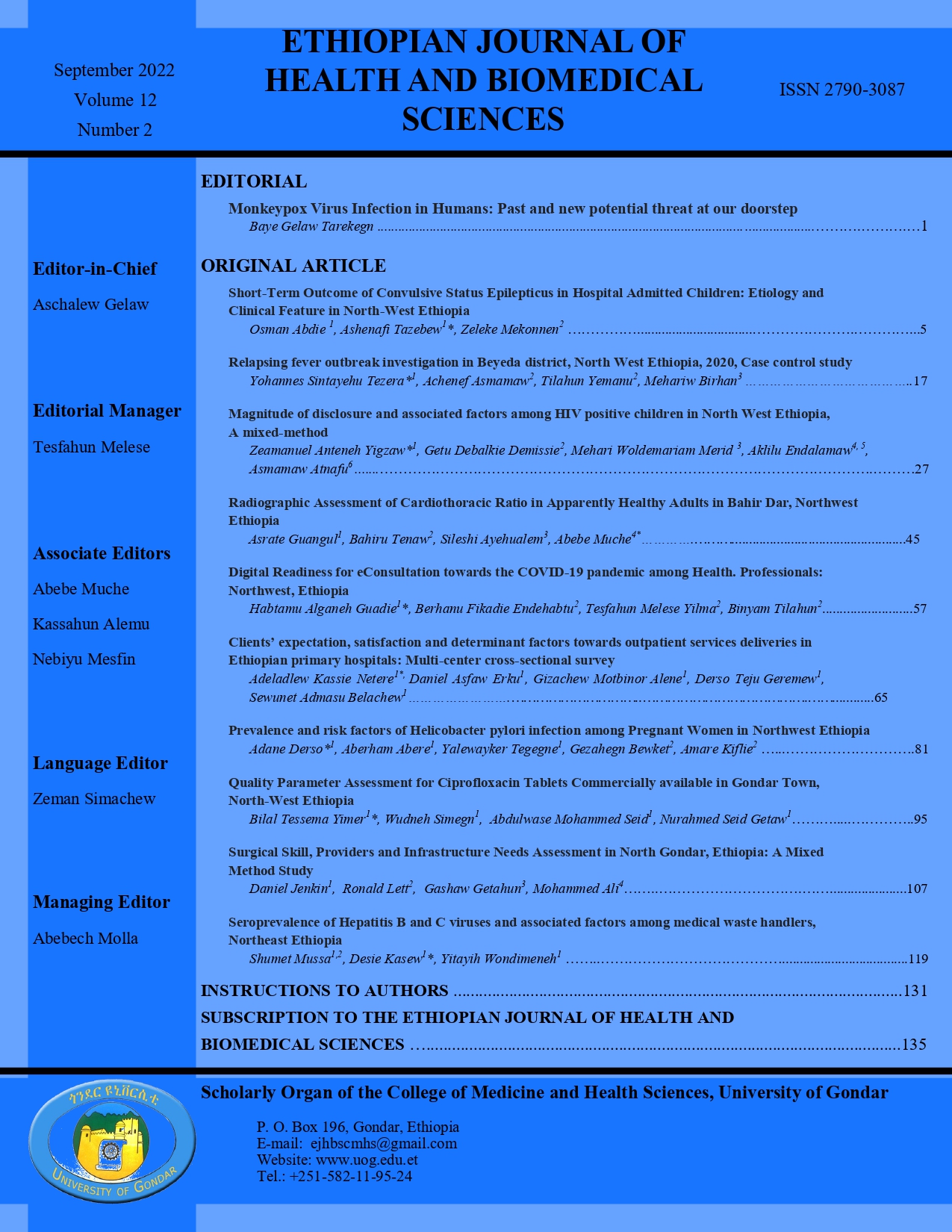Magnitude of disclosure and associated factors among HIV positive children in North West Ethiopia, A mixed-method
DOI:
https://doi.org/10.20372/ejhbs.v12i2.302Keywords:
HIV, Children, Disclosure, Mixed Method, EthiopiaAbstract
Background: Disclosure of HIV positive status of children is an essential component of HIV care services in the long-term disease management. It is a complex process, and it varies from community to community. Therefore, it is important to understand the disclosure status, determinants, and to explore the reason. Thus, this study aimed to assess disclosure status of children, associated factors, and reasons for not to disclose among caregivers in the Northwest part of Ethiopia.
Methods: A mixed approach with a facility based on cross sectional study for the quantitative component was employed. Similarly, the qualitative component was conducted concurrently with the quantitative one with phenomenological study design. Four hundred children, and 19 caregivers for both the quantitative and qualitative study were enrolled. Data were collected in the Northwest part of Ethiopia, Gondar town from January to June 2019. In the same way, simple random sampling technique was employed to select study participants for quantitative data, and purposive sampling for qualitative ones. In addition, a structured questionnaire, and in-depth interview guide were used to collect the data. Binary and multivariable logistic regression was done to identify associated factors for quantitative data whereas the thematic analysis was used for the qualitative data.
Results: Nearly two-third 262 (65.5%) (95% CI; 61.0-70.0) of the children disclosed their HIV positive status. Age of the child (Adjusted odds ratio AOR=8.05. 3.98-16.27), age of caregiver (AOR= 1.92, 1.07-3.42), duration on ART (AOR=3.24, 1.66-6.32), death of family (AOR=1.99, 1.01-3.92), being trained about disclosure (AOR=4.02, 1.83-8.36) and responsible person for medication of the child (AOR=2.87, 1.43-5.76) were significantly associated to HIV disclosure status. Participants expressed the view that if children had given adequate information about having HIV, they would not only adhere to medication, but they also play an active part in the management of their conditions.
Conclusion: Although WHO guideline on HIV disclosure counselling for children and other global HIV disclosure perspectives recommend that all children starting from six year should be disclosed of their HIV status, the HIV disclosure status of children was low in our study. Age of the child, age of the caregiver, duration on ART, death of family, training about disclosure, and responsible person for the child’s medication was independent determinants of the disclosure. Thus, we recommend the establishment of effective strategies to promote disclosure in health facilities.


